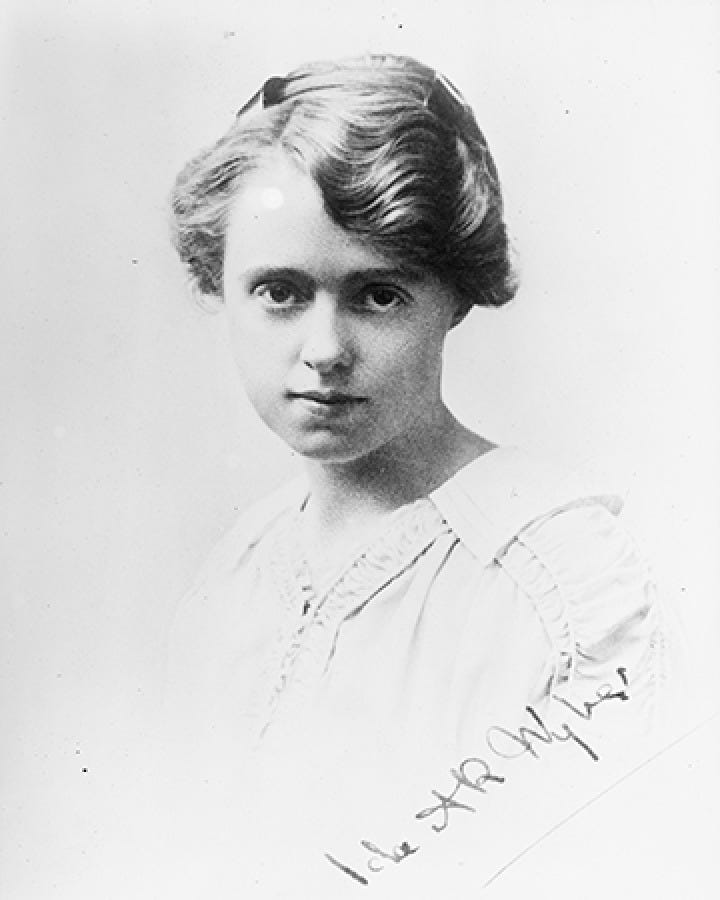A Lifesaving Pathologist and Queer Feminist Icon
Dr. Louise Pearce helps cure sleeping sickness, a deadly parasitic infection.

From 1896 to 1906, a devastating epidemic of sleeping sickness took the lives of an estimated 300,000 to 500,000 people in Uganda and Congo. Between 1900 and 1920, more than 250,000 people in southern Uganda died in another epidemic.
Human African trypanosomiasis (HAT), also known as African sleeping sickness or sleeping sickness, is a parasitic infection spread by the bite of an infected tsetse fly. The parasites can cross the placenta blood barrier, so infection can also be passed from mother to fetus. The parasites can infect the blood as well as other tissues. As the parasite begins to multiply, victims experience fevers that come and go, headaches, swollen lymph nodes, lethargy, and pain and itching in the joints. These early stage symptoms are common to a multitude of other illnesses.
It would be the second stage of the infection that you would realize for sure what you were dealing with. This slow, insidious development could take up to a year but once it crosses the blood-brain barrier into the central nervous system, the parasite wrecks havoc on the body. Symptoms include poor coordination, tremors, seizures, behavior changes, confusion, and hallucinations.

The most notable issue is in the disease’s name: HAT interrupts the natural sleep cycle, leaving you exhausted during the day, yet unable to sleep at night. Without treatment, HAT is nearly always fatal. In the early 1900s, there was no treatment. That is, until Louise Pearce came along.
Born in Massachusetts in 1885, Louise became the first woman researcher at the prestigious Rockefeller Institute for Medical Research in 1913. It was certainly a well-deserved honor. She had earned a bachelor’s degree in physiology and histology from Stanford University in 1907, completed a few years of postgraduate studies at Boston University, then transferred to Johns Hopkins University School of Medicine, where she specialized in pathology, finally achieving an M.D. in 1912. Dr. Pearce was a rising star, one the Rockefeller Institute was wise to snap up.
Louise began her tenure as an assistant to experimental pathologist Simon Flexner, the Institute’s first director. In the first few years of 1900, (just before Louise entered undergraduate studies), researchers had discovered that sleeping sickness was caused by several species of the parasite trypanosome, and was transmitted via flies. Research on treating infected animals with arsenic compounds showed promise, but investigations were still in the early stages.
At the Rockefeller Institute, Simon and Louise, alongside fellow pathologist Wade Hampton Brown, as well as chemist Walter Jacobs and immunologist Michael Hiedelberger, tested the theory that arsenical compounds could be used to effectively treat parasitic infections like sleeping sickness. The team began to build on findings from a lab in Germany, which had created an arsenic-derived medication that could treat syphilis.
While Walter and Michael synthesized as many arsenicals as possible (they would find a total of 243), Louise and Wade set about examining disease models in rats, mice, guinea pigs, and rabbits. This would allow them to observe the disease’s progression and test the effectiveness and any side effects of different compounds. Since the parasites crossed into the central nervous system in rabbits, these animals proved particularly useful as models of how the parasites infected humans (they found that in rodents, the parasites largely remained confined to the bloodstream). In 1915, Louise became the first woman elected to membership in the American Society for Pharmacology and Experimental Therapeutics (ASPET).
Louise was a “woman-oriented woman,” aka lesbian, who moved in with Sara Josephine Baker (a physician known for catching Typhoid Mary) and her partner, novelist and screenwriter Ida Alexa Ross Wylie, in Greenwich Village. Louise and Sara were said to be an item; Ida was reportedly involved with both Sara and Louise. What’s likely is that all three women were in a polyamorous relationship together, forming the ultimate power throuple. They were all active members of the Heterodoxy club, a radical feminist group of mostly queer women that met biweekly for animated discussion over lunch.
Back at the lab, after a few years of trial and error, the team had landed on the organo-arsenical compound tryparsamide as effective in treating trypanosome and spirochete infections. Their results were published in several papers in the Journal of Experimental Medicine in 1919. It was an incredible turning point for the fight against deadly parasitic infections: the first drug that could effectively treat late-stage sleeping sickness.
The following year, Louise was sent to test tryparsamide in humans in a Belgian Congo hospital lab, “trusting her vigorous personality to carry out an assignment none too easy for a woman physician and not without its dangers,” the Institute noted. There was no time to lose: A new epidemic had just begun.
To establish tryparsamide's safety, effectiveness, and optimum dosage in humans, she designed a drug testing protocol and got to work performing human trials. Arsenical compounds were not without risks, but Louise’s trials found that common side effects, such as optic nerve damage, only occured with high or repeated doses. Amazingly, nearly all early-stage sleeping sickness patients, and most later-stage cases were cured. Her work successfully saved the lives of patients suffering from sleeping sickness and from syphilis—previously almost universally fatal diseases.
Alongside this work, the French military soon began a systematic approach to identify sleeping sickness clusters and eliminate the associated parasite reservoir. By 1930, the prevalence of sleeping sickness had dropped precipitously from 60% in 1919 to a mere 0.2–4.1%. Louise received the Order of the Crown of Belgium for her work and was made a member of the Belgian Society of Tropical Medicine. By the mid-1960s HAT was under control with below 5,000 annual cases continent-wide.
Louise returned to the Institute and her lab partner Wade. They set about observing syphilis in rabbits, and ended up discovering a malignant epithelial tumor of the scrotum, dubbed the Brown-Pearce Carcinoma. Tryparsamide also became the standard treatment for syphilis until penicillin replaced it. In 1923, Louise was promoted to Associate Member at the Rockefeller Institute.
In 1932, Louise, Sara, and Ida moved to Trevanna Farm in Skillman, New Jersey. Louise commuted to work until she took the position of president of the Women’s Medical College of Pennsylvania in 1951, where she could inspire the next generation of women in medicine. A colleague described Louise’s home as a “most delightful and interesting place to live and study. Her shelves were crowded with many old editions of medical treasures, the latest scientific literature and the latest works on international questions. She had a wonderful collection of Chinese carvings and porcelains.”
Throughout the course of her career, Louise was affiliated with a number of organizations, including the New York Infirmary for Women and Children, the American Social Hygiene Association, and the National Research Council. She was visiting professor of Syphilology at Peiping Union Medical College in China and director of the Association of University Women. Sara died in 1945; Louise and Ida continued living together on the farm until they both died in 1959.
Further Reading
“Louise Pearce – An Extraordinary Woman of Medicine,” by Susan Russo. Natural Selections, The Rockefeller Institute.
Episode 32: No, they weren't just 'roommates'! Lady Science podcast, 2020.
Dr. Louise Pearce. Changing the Face of Medicine, National Institutes of Health.
LGBTQIA+ History Month 2023: Louise Pearce (1885 – 1959). Center for Virus Research, University of Glasgow.
More About Me
Olivia Campbell is the New York Times bestselling author of Women in White Coats: How the First Women Doctors Changed the World of Medicine and Sisters in Science: How Four Women Physicists Escaped Nazi Germany and Made Scientific History. Signed copies are available online at Newtown Bookshop and Doylestown Bookshop.
A seasoned journalist and essayist, her work focuses on women’s health and the history of women in relation to science, the intersections of science and the humanities, as well as nature, environment, ecology.
Campbell is the resident “science of folklore” contributor at National Geographic, a freelance editor at Everyday Health, and a thesis advisor for her alma mater, Johns Hopkins University's science writing master’s degree program. Her work has appeared in The Atlantic, The Guardian, Washington Post, New York Magazine, People, Smithsonian Magazine, Scientific American, the Wall Street Journal, Aeon, Literary Hub, and History.com, among others. She lives outside Philadelphia with her husband, sons, and cats. Find out more on her website.






